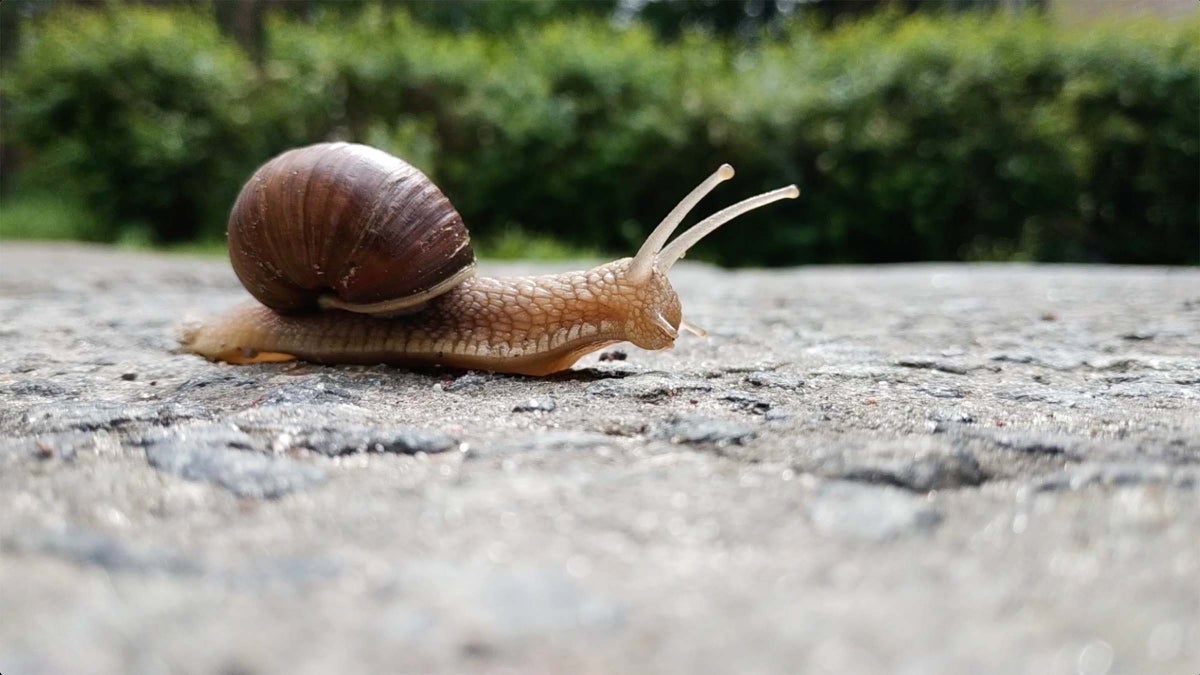No products in the cart.
Outdoor Adventure
In a World of FKTs, I Prefer to Go Slow. Really Slow.
The above paragraphs were written in response to an increasingly popular outdoor hobby (or is it a sport, a practice, a philosophy, a value system, a recreation cult, a mass Kool-Aid binge?) referred to by the acronym FKT, short for fastest known time. If you haven’t heard of FKT, well, presumably the cave you reside in is a comfortable, happy domicile. Very simply: Self-propelled endurance freaks—primarily runners, though also cyclists and ski-mountaineering devotees and gonzo alpinists—push themselves on established routes, racing against the clock, the terrain, previous FKT holders, future FKT aspirants, and their own impending meltdowns. According to the guidelines page on the site Fastest Known Time, the official FKT clearinghouse, archive, and stoke repository launched as a web forum in the mid-2000s, a route has to be notable, distinct, and repeatable to merit inclusion. [Editor’s note: Outside Inc., the parent company of Outside magazine, purchased Fastest Known Time in early 2022.] Examples include the 2,189-mile Appalachian Trail, or Japan’s 272-mile Shiga Round Trail, or South Africa’s 24-mile Otter Trail. A lady named Catherine Weiner apparently dashed to the summit of Camel’s Hump via the Burrows Trail in 49 minutes and 36 seconds, a staggering 15 and a half hours quicker than my slo-mo ascent. We can’t all be champions.
Folks have likely chased speed for countless millennia (the joyous agonizing Cro-Magnon rush) and John Muir was hardly the first fuddy-duddy to criticize the speedy folks when he said, with contempt in his voice, “People ought to saunter in the mountains—not hike!” It’s a hoary refrain, cast many ways: Stop and smell the roses. How gross to reduce nature to your ego’s Indy 500. This behavior is symptomatic of a sickness at the heart of our species, a sickness exacerbated by mechanized industrial society’s infatuation with efficiency, busyness, competition, linear measurement, Fitbits, Twitter, blah, blah, blah. I wish to avoid that entire rat’s nest, er, debate and limit my comments to the genuine challenge and delight of going slime-mold slow, tectonic-plate slow, drowsy-manatee slow. Pace is a key chain with dozens of unique keys, each of which opens a secret door in the land. Pedal to the metal? Dragging ass? Who could ever choose one over the other?
My recent trip up Camel’s Hump wasn’t fiction. I really did spend 16-plus hours covering fewer than three miles, and it really did bring me to the physical-mental edge, and I really am pleased with myself. The fundamental elements of classic burly wilderness adventure were present: The SKT demanded a bunch of energy and effort and calories. It was a test of my fortitude, my wherewithal. The outcome wasn’t a foregone conclusion, i.e., failing to summit remained a possibility to the end. Style mattered, both ethic and aesthetic. And most important, primal shivering contact with the environment was mandatory. Key in lock—click—the door swung open, revealing raptors, fungi, an emptiness of blue sky, a knife cut of starlight, frigid gusts, sudden stillness. Sensory overload.
A lady named Catherine Weiner apparently dashed to the summit of Camel’s Hump via the Burrows Trail in 49 minutes and 36 seconds, a staggering 15 and a half hours quicker than my slo-mo ascent. We can’t all be champions.
Camel’s Hump isn’t the only place where the key has clicked. From Atlantic beaches to southwestern deserts—from the Cascades to the Tetons to the Adirondacks—I’ve experimented with extreme slowness, notching SKTs along the way. My Rim-to-Rim at the Grand Canyon was molasses. My Grays-Torreys traverse in Colorado was honey oozing from the jar. Don’t even ask for the story of my trek in the Olympic Peninsula’s Hoh Valley—it would take forever to tell.
I can’t recall when exactly this quirky pastime began—after fifth grade, definitely, as my childhood was all sugar and bouncy balls and Mach-5 exuberance—but a Saturday afternoon in San Francisco, back in my twenties, marks the moment when the concept crystalized and I clearly grasped the magic of slowness. I was living at the center of the city (a dirtbag nature boy will do strange, torturous things for the love of a good urban woman) and the claustrophobia of concrete heaped upon concrete was threatening to suffocate me. Dreaming of the Sierra Nevada and the Lost Coast, of the getaway car I didn’t possess, I bolted for the Mount Sutro Open Space Reserve, an 80-acre grove of eucalyptus tucked behind a hospital complex, three miles from my apartment and smack-dab in the middle of the city. Green scent, green light, green mood, green freedom… ahhh.
Nope. The relief was ephemeral, because within an hour I’d strolled out of the eucalyptus and into yet another neighborhood of wailing ambulance sirens and latte-sipping yuppies. Instinctively, I spun on my heels and reentered the grove, without a plan but determined to somehow extend the green.
Inhale, exhale. Inhale, exhale. Inhale, exhale. Inhale, exhale. Inhale, exhale.
Step.
Inhale, exhale. Inhale, exhale. Inhale, exhale. Inhale, exhale. Inhale, exhale.
Step.
How’s the expression go? Scorn for latte-sipping yuppies is the mother of invention? Five breaths at a time, I moved up the path. Five breaths at a time, the 52 delicate bones in my feet absorbed the micro topography. Five breaths at a time, my spine tingled with electric signals that seemed to emanate from the soil. Five breaths at a time, I adjusted to a radically unhurried rhythm and a thrillingly fresh awareness.
A snail dropped me to all fours. I zoomed in. A fog-dragon rattled branches in the canopy. I zoomed out.
Inhale, exhale.
Step.
I stayed in the grove until dusk, going nowhere, traveling far.
Source link

